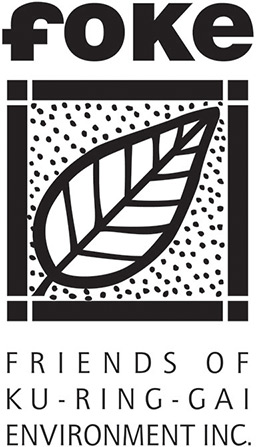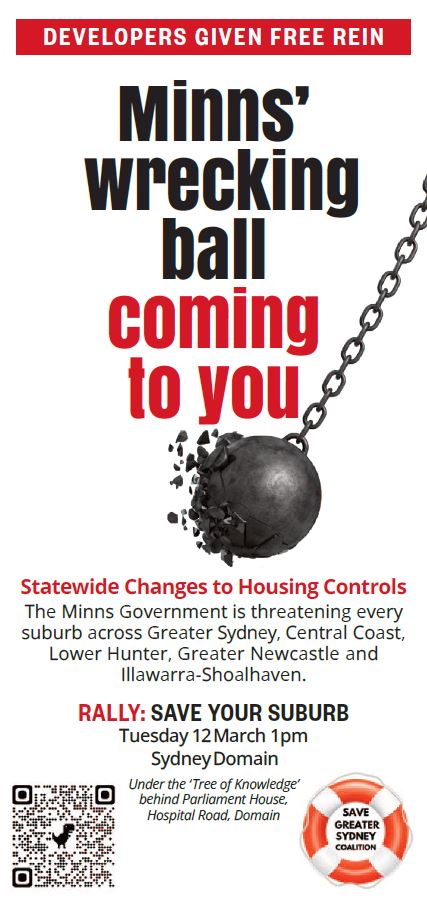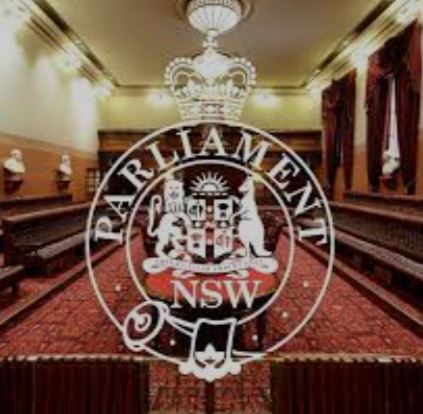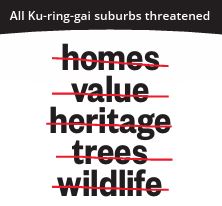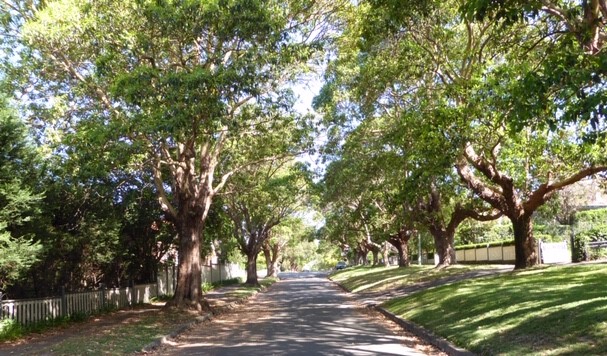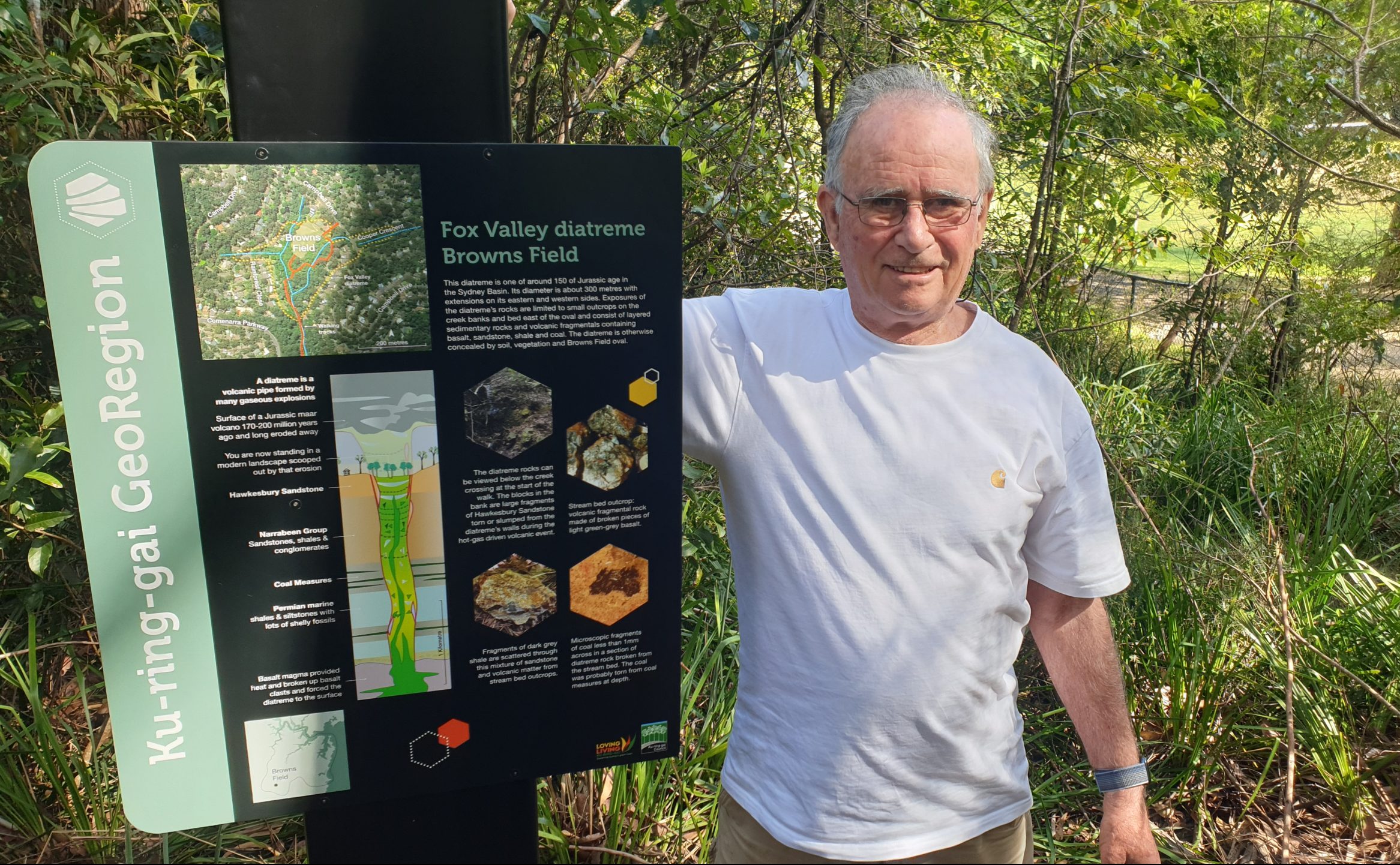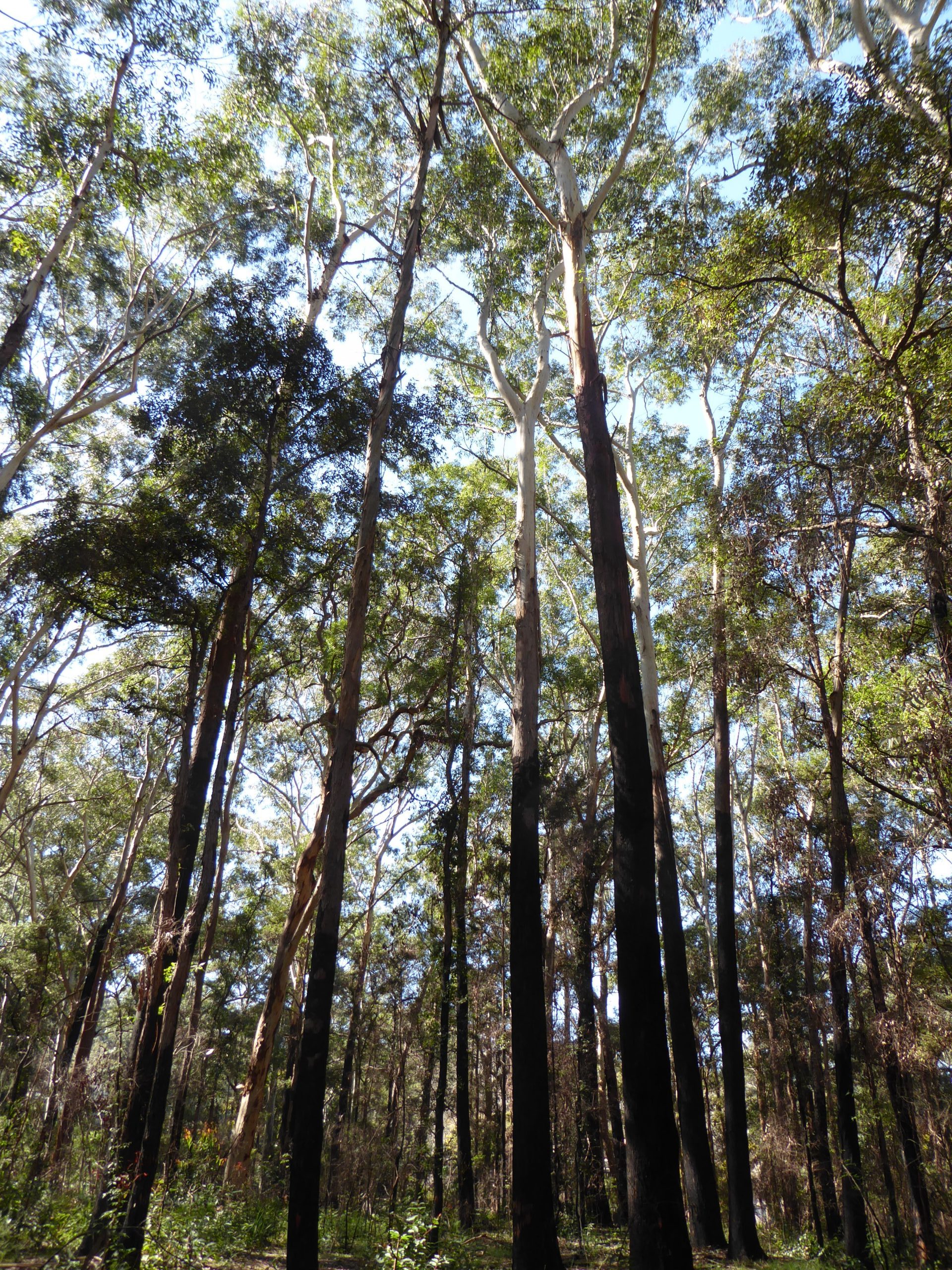Please write letters to the Upper House Crossbench calling on them to SUPPORT The Hon. Scott Farlow, MLC & Shadow Minister for Planning’s DISALLOWANCE BILL opposing the Transport Oriented Development (TOD) program across Greater Sydney, including in Ku-ring-gai.
Continue readingSydney’s ‘land banking’ crisis
Read Greg Callaghan’s article ‘Left to rot: The ‘ghost homes’ scourge in our big cities – amid a housing crisis, Sydney Morning Herald, 13 July 2024
Continue readingFOKE E-News July 24
Find out how you can help protect Ku-ring-gai – a place of outstanding heritage & environmental significance.
Continue readingThe Koala documentary
New evidence debunks the ‘scientific justification’ for logging critical koala habitat. Knowing this, it is more important than ever to see this documentary.
Continue readingVale Don Brew
FOKE member Don Brew (1935 – 2024) was honoured by Ku-ring-gai Council for his fearless and dedicated advocacy for Ku-ring-gai’s heritage.
Continue readingHope – Interim Heritage Order
Ku-ring-gai Council is working hard to protect Ku-ring-gai’s 23 Heritage Conservation Areas.
Continue readingIt’s YOUR home. YOU don’t have to sell
The Transport Oriented Development and Well-Located Housing SEPPs have triggered a surge of interest among developers, leading to a frenzy of activity akin to a gold rush. Developers are increasingly reaching out to homeowners with offers to secure “Option Contracts” for the future purchase of their land.
Continue readingAttend, listen & watch TOD Inquiry on Wed 24 July
The final public hearing on the Development of the Transport Orientated Development (TOD) will be held in the Macquarie Room, Parliament House, Sydney on Wed 24 July, 2024
Continue readingFOKE Talk, July 2024
Read FOKE’s newsletter ‘FOKE Talk’, July 2024 to find out the latest issues facing Ku-ring-gai.
Continue readingFOKE’s President Report, 22 May 2024
Read Kathy Cowley, FOKE President’s Report that tells the work that FOKE has done to protect Ku-ring-gai over the past year.
Continue readingHope – Council’s legal action
Ku-ring-gai Council Vs NSW Government is expected to proceed from Friday 19 July 2024.
Continue readingDespair – Low- & Mid-rise Housing & Dual Occupancies
Thanks to all who attended Ku-ring-gai Council’s community forums on the NSW Government’s Low and Mid-Rise Housing plans.
Continue readingVolunteers needed Sun 14 July
Help FOKE save our trees and wildlife. Volunteers needed on Sunday 14 July
Continue readingSave Greater Sydney Coalition Forum on 7 August
Please join FOKE on this important forum in the NSW Parliament Theatrette on Wednesday 7 August 2024 at 6,30pm. Booking details to follow soon.
Continue readingUnaffordable Auckland
Read Cameron Murray’s study that dismantles the Auckland myth. Density did NOT create affordable housing.
Continue readingYES it IS BAD for the whole of NSW
Read why FOKE agrees that the NSW’s Government’s housing policy is “bad for the whole of NSW”.
Continue readingLow & Mid-Rise Threats
Watch Ku-ring-gai Council explain the planning disaster that is coming to every street that is 800 metres from a train station or large supermarket
Continue readingTrees – a timely reminder
If you missed Ku-ring-gai Councils Tree Forum on 26 March, 2024 it is worthy watching again – especially in light of the NSW Governments ‘deforestation designed’ planning SEPPs
Continue readingDisallow and STOP the TODs
says Scott Farlow, MLC & Shadow Minister for Planning
Continue readingFOKE’s evidence against TOD
Read FOKE’s evidence against the TOD
Continue readingMinns forgets his “avalanche of many ugly, poorly built developments” speech
FOKE wishes to remind Premier Chris Minns what he said on the floor of the Legislative Assembly on 8 August 2018 about planning for Greater Sydney.

Read the full speech on Hansard
Read Premier Minns and his TOD SEPP by:
Paul Scully, MP, Minister for Planning & Public Spaces State Environmental Planning Policy (Housing) Amendment (Transport Oriented Development) 2024 under the Environmental and Planning Act 1979 HERE
18 June, 2024
TOD Disallowance Bill
Read more about the TOD Disallowance Bill HERE
Scott Farlow, MLC & Shadow Minister for Planning, has introduced a Private members Bill into the Legislative Council. This Bill is the Environmental Planning and Assessment Act 1979 to enable State Environmental Planning Policy (Housing) Amendment (Transport Oriented Development) 2024. The aim is to disallow the Transport Oriented Development (TOD) program that is a blunt and one-size-fits all instruments that will have catastrophic impacts on Ku-ring-gai s tree canopy, environment, heritage and amenity.
On 5th June 2024, Scott Farlow said:
“The Coalition supports measures, including increasing density along transport corridors, to meet ambitious housing targets, but they must be done right and in consultation with local communities. This has not been the case with the Transport Oriented Development State Environmental Planning Policy, which provided no opportunity for community consultation despite increased community participation being an object of the Act”.
Read FULL STATEMENT HERE
The Bill will be introduced into the Legislative Council.
Please urge MLCs to vote for the TOD Disallowance Bill.
Please ADAPT and EDIT in your own words the letter below:
Then send the email to each member of the crossbench asking them to support the Disallowance Bill.
Their contact emails are HERE
Read TOD SEPP by:
Paul Scully, MP, Minister for Planning & Public Spaces State Environmental Planning Policy (Housing) Amendment (Transport Oriented Development) 2024 under the Environmental and Planning Act 1979 HERE
18 June, 2024
Ku-ring-gai remains steadfast on TOD legal action
FOKE thanks Ku-ring-gai Councillors who voted to continue the legal action against the NSW Governments undemocratic and environmentally and heritage destructive Transport Oriented Development (TOD) program.
A majority of nine councillors stood steadfast in their support to continue the legal action against the TOD.
Watch Ku-ring-gai Council meeting HERE.
Since coming into effect on 13 May, 2024, the TOD continues to cause anguish, distress and despair for residents and particularly to those living within 400 metres of Gordon, Killara, Lindfield and Roseville Stations.
The TOD will allow 6 to 7 storey apartment buildings on most sites within 400 metres of Gordon, Killara, Lindfield and Roseville railway stations.
Residents remain in shock to think that a NSW Government would allow Ku-ring-gai’s unique and irreplaceable heritage and environment to be so willfully destroyed by developers.
Many residents are now being threatened with financial and housing insecurity. Those living within the TOD are being pressured to sell their properties with threats that if they don’t their properties will be devalued.
Ku-ring-gai Councillors know they have no choice but to take legal action. The NSW Government has shown no indication that they will negotiate with Council. Instead, Minns appears determined to push through this undemocratic TOD hyper-overdevelopment SEPP that will be catastrophic for not only Ku-ring-gais heritage and environment but NSWs.
It is pleasing to hear that the NSW Liberals are prepared to overturn the TOD program.
We now have hope that Councils legal challenge and the Coalitions Disallowance Bill will stop the disastrous TOD.
Postscript
Read TOD SEPP by:
Paul Scully, MP, Minister for Planning & Public Spaces State Environmental Planning Policy (Housing) Amendment (Transport Oriented Development) 2024 under the Environmental and Planning Act 1979 HERE
11 June, 2024
Stop Crs Spencer & Pettett selling out Ku-ring-gai
Attend Ku-ring-gai Council meeting
Tuesday 4 June, 2024 7pm
Council Chambers 818 Pacific Highway, Gordon (entrance at rear of Council)
Send the message to all Ku-ring-gai Councillors: STAND UP FOR KU-RING-GAI
Email: councillors@krg.nsw.gov.au
Read Crs Spencer & Pettetts Notice of Motion HERE
Cr Cedric Spencer & Cr Jeff Pettett have called for an Extraordinary General Meeting on Tues 4th June 2024 at 7pm to rescind Ku-ring-gai Councils legal action against the NSW Government’s undemocratic, unaffordable and unsustainable rezonings – known as the Transport Oriented Development (TOD) program.
Their actions are irresponsible and go against resolutions councillors have consistently voted for since November 2023.
Legal action is the only power Ku-ring-gai Council has to save ratepayers millions of dollars in infrastructure costs that will come with the rezoning for high density housing in Roseville, Lindfield, Killara and Gordon.
Already developers have announced they want the TOD program to be extended to other areas. This rings alarm bells for more high density rezonings for Pymble, Turramurra, Warrawee and Wahroonga. This means more environmental and heritage destruction for Ku-ring-gai—wiping out its tree canopy and heritage conservation areas.
Cr Spencer & Cr Pettett’s motion signals a “green light” for developers to make super profits from what is the largest rezoning ever in the history of Ku-ring-gai and Greater Sydney.
If passed their actions could destroy Ku-ring-gai’s tree canopy, heritage and lead to planning chaos with no additional infrastructure.
FOKE’s evidence to TOD Inquiry
FOKE was invited to give evidence to the NSW Parliament’s Upper House Inquiry into the development of the Transport Oriented Development Program (TOD) on Monday 20 May 2024 in the Macquarie Room, Parliament House, Sydney.
FOKE concluded its evidence calling on the NSW Government to immediately withdraw the TOD program because of the devastation it will cause not only to the natural, built and cultural heritage of Ku-ring-gai but for Greater Sydney.
During FOKEs session from 12.15 pm, Mr Frank Howarth AM (Chair, Heritage Council of NSW); Mr David Burden (Conservation Director, National Trust of Australia (NSW) and Ms Jozefa Sobski AM (Vice President, Haberfield Association Inc) presented evidence as well.
Following FOKE’s presentation the Save Greater Sydney Coalition (SGSC) which FOKE is a member of, presented their evidence. It was a powerful presentation!
Read list of speakers at Upper House TOD Inquiry 20.5.24 HERE
Watch video of FOKE’s evidence to the Upper House TOD Inquiry Hearing 20.5.24 HERE
Read transcript of FOKE’s evidence to the Upper House TOD Inquiry Hearing 20.5.24 HERE
Read FOKEs Submission to the TOD Inquiry 27.3.24 HERE
Read further information about the Upper House Inquiry HERE
Postscript
Read TOD SEPP by:
Paul Scully, MP, Minister for Planning & Public Spaces State Environmental Planning Policy (Housing) Amendment (Transport Oriented Development) 2024 under the Environmental and Planning Act 1979 HERE
FOKE’s evidence to Planning & Climate Change Inquiry 10 May, 2024
FOKE presented evidence to the NSW Parliament Upper House Portfolio Committee No. 7 regarding its inquiry into the planning system and the impact of climate change on the environment and communities on Friday 10 May 2024 at the aks Room, Dee Why RSL, Dee Why from 12.00 pm to 12.45 pm. Appearing alongside FOKE was Friends of Lane Cove National Park Inc.
The Upper House Portfolio 7 Committee consist of:
Chair: Higginson, Sue (GRNS, LC Member); Deputy Chair: Ruddick, John (LP, LC Member); Members: Buttigieg, Mark (ALP, LC Member); D’Adam, Anthony (ALP, LC Member); Farlow, Scott (LIB, LC Member); Munro, Jacqui (LIB, LC Member); Primrose, Peter (ALP, LC Member)
FOKE Introductory Statement
Thank you for the opportunity for Friends of Ku-ring-gai Environment, or ‘FOKE’ as we are known, to comment on Portfolio Committee No. 7’s Inquiry into the NSW planning system and the impact of climate change on the environment and communities.
In speaking about Ku-ring-gai, FOKE wishes to acknowledge the traditional owners of Ku-ring-gai, and that it is on the land of Gammeragal (Roseville) Darramurragal (Turramurra) and Guringai (West Head) Country.
FOKE is a community group, run by volunteers. It celebrates its 30th Anniversary this year. During these three decades FOKE has advocated for the protection of Ku-ring-gai’s natural, built and cultural heritage.
FOKE is deeply alarmed at the state of the current planning system and takes the view that it endangers the lives of residents from the accelerating impacts of climate change. Ku-ring-gai, being surrounded by three national parks, is in a high bushfire prone area and with properties exposed to flood hazard. With escalating climate change Ku-ring-gai will face more frequent, intense and life-threatening bushfires and flooding.
FOKE unreservedly opposes a NSW planning system that weakens environmental protections. Stronger environmental protections at the state and federal level are urgently needed to stem the crisis of biodiversity extinction and the climate emergency.
The increasingly “one-size fits all” NSW planning system needs to be overhauled to ensure planning decisions prioritizes resilience, climate safety and biodiversity conservation. In its current form it offers little protection.
Central to FOKE’s submission is the view that there has, and continues to be, a public policy failure with successive governments’ urban consolidation policies that drive dangerous climate by escalating the environmental crisis through land clearing, deforestation, habitat destruction, loss of canopy and seedbank.
FOKE is deeply concerned that the current NSW planning system and poor controls exerted by planning instruments, continues to profoundly change the landscape of Ku-ring-gai and its critically endangered ecological communities, particularly its remnant Blue Gum High Forest and Sydney Turpentine Ironbark Forest; as well as their capacity to regenerate into the future. It will also destroy Ku-ring-gai’s natural beauty and its urban villages, many of which are located within or adjacent to heritage conservation areas or national parks.
Over 70% of Ku-ring-gai’s Endangered Ecological Communities (EECs) are located on private land.
FOKE takes the view that the survival of these Endangered Ecological Communities are key to the survival of Ku-ring-gai’s tree canopy. Yet these Endangered Ecological Communities are under threat due to the decades of local government powers being weakened.
Since the introduction of external planning panels and the deregulation and privatisation of compliance and enforcement regulators, local governments no longer have the regulatory and enforcement powers to refuse most development applications and ensure the ongoing conservation of its natural environment.
Complying development, SEPPs and substantially weakened legislation have fueled tree removals on private land replacing small houses with oversized ‘McMansion’ type houses and apartment buildings, replacing trees and gardens with hard surfaces and reducing the property’s capacity for deep soil landscaping. Without adequate deep soil landscaping provisions on private property Ku-ring-gai’s Endangered Ecological Communities and canopy cannot survive into the future. Deeply alarming is that there is less than 1% left of Blue Gum High Forest in the world.
FOKE is concerned that current development proposals are assessed in isolation without consideration of the cumulative impacts of previous planning and development decisions and their impacts on the environment.
FOKE calls on the NSW Government to implement a new fit for purpose climate planning system, based on ecologically sustainable development and which uphold the highest standards of biodiversity conservation and climate resilience.
Find list of speakers at Inquiry Hearing on 10 May 2024 HERE
Watch video of FOKE’s evidence at Inquiry on 10 May 2024 HERE or BELOW:
Read full transcript HERE
Read FOKE’s Submission HERE
Watch the Public hearing – PC7 – Planning and the impacts of climate change, 17 June, 2024 HERE
Ku-ring-gai’s WAKE UP letter to NSW residents
READ Ku-ring-gai’s open letter to NSW residents, published in early May 2024:
An open letter to NSW residents – WAKE UP
We’ve all heard about the NSW Government’s plans for increased housing. But no-one has heard anything about how our schools, hospitals, roads and parks are meant to support this population growth.
Read full letter HERE
Save Sydney Rally
ON Tuesday 12 March 2024 1pm
AT Tree of Knowledge behind Parliament House, Hospital Road, Domain. Map here.
PROTEST against the new planning laws proposed by the NSW Government.
THREATENS every suburb across Greater Sydney, Blue Mountains, Central Coast, Lower Hunter, Greater Newcastle and Illawarra-Shoalhaven.
BRIING banners identifying your suburb or council area.
SPEAKERS will include MPs, Mayors & Community representatives.
SHARE with your networks, community groups, neighbours, friends and family.
VISIT SAVE GREATER SYDNEY COALITION Website & Facebook
CONTACT KATHY COWLEY, President, FOKE, info@foke.org.au for more information
TOD Inquiry Announced
The NSW Parliament has announced an Upper House Inquiry into the Development of the Transport Orientated Development Program (TOD).
Submissions are due on 28 March 2924.
The TOD Program will devastate Ku-ring-gais heritage conservation areas and environmentally sensitive lands particularly the 400 metres surrounding Roseville, Lindfield, Killara and Gordon Stations.
Both the TOD Program and the Low and Mid-rise Housing State Environmental Planning Policy (SEPP) will include a “non-refusal” standard which will disallow Ku-ring-gai Council heritage and environmental controls.
The TODs 3:1 FSR and 6-7 + storey heights (with no minimum lot size or lot width) will effectively wipe out Heritage Conservation Areas and remove critically endangered Blue Gum High Forest (BGHF) and Sydney Turpentine Ironbark Forest (STIF) in Roseville, Lindfield, Killara and Gordon.
The Upper House Committee consist of:
Chair: Sue Higginson MLC (GREENS)
Deputy Chair: John Ruddick MLC (LDP)
Members:
Mark Buttigieg MLC (ALP)
Anthony D’Adam MLC (ALP)
Scott Farlow MLC (LIBERAL)
Jacqui Munro MLC (LIBERAL)
Peter Primrose MLC (ALP)
The Terms of Reference can be found here.
It is critical that as many submissions be sent in by members of the community.
Say NO to NSW Government
Send your submission HERE by deadline Friday 23 February, 2024
Ideas to help you send your submission:
The NSW Minns Government planning ‘reforms’:
- are grossly UNDEMOCRATIC.
- are flawed. They undermine the integrity of the entire NSW PLANNING system and will lead to planning chaos.
- will destroy the character, heritage and environment of Sydney’s diverse suburbs with a “one size fits all policy”.
- fails to consider local amenity impacts, including overshadowing, loss of privacy, loss of scenic views, loss of streetscape.
- fail to ensure good quality and good designed apartment buildings.
- put the interests of property developers before the COMMUNITY.
- will allow super windfall rezoning profits to be ‘gifted’ to property developers.
- will not address the housing affordability crisis.
- will open the NSW planning system to “corruption risk” with the introduction of the ‘non-refusal standards’ (including money-laundering).
- deny natural justice for those residents living within a Transport Oriented Development (TOD) with no opportunity to object.
- deny natural justice for those residents living across Sydney with the introduction of the Changes to create low and mid-rise housing occurring just before the Christmas, New Year and school holidays.
- lack transparency and accountability. The Minns Government refuses to release the “Cabinet in confidence“ evidence justifying why Roseville, Lindfield, Killara and Gordon had the necessary infrastructure to take further density. the TOD to be introduced 400 metres surrounding Roseville, Lindfield, Killara, Gordon Railway Stations can take the increase in density.
- are environmentally irresponsible when Sydney’s natural ENVIRONMENT is under severe with the escalating threats of climate and biodiversity extinction.
- fail to acknowledge Sydney’s environment interconnections. Ku-ring-gai is the lungs of Sydney. What happens to Ku-ring-gai’s trees will impact on Western Sydney’s, Northern Beaches, Sydney Harbour’s and the Hawkesbury River’s environmental health.
- will devastate Ku-ring-gai’s natural environment with the overriding of existing Council protections including Tree & Vegetation Development Control Plan (DCP), Urban Forest Policy, Threatened Species Community.
- Fail to acknowledge Ku-ring-gai as an environmentally sensitive area.
- Fail to acknowledge Ku-ring-gai’s Aboriginal heritage that is a local government area that has one of the most significant Aboriginal sites in Sydney.
- will push Ku-ring-gai’s Critically Endangered Ecological Communities (Blue Gum High Forest, Sydney Turpentine Ironbark and Duffys Forest) and its wildlife and birdlife to extinction (Federal Environment Protection and Biodiversity Conservation Act).
- will destroy Ku-ring-gai’s tree canopy. Already Ku-ring-gai’s tree canopy is under serious threat with an 8-9% slash in tree canopy cover. The NSW Housing Strategy will accelerate this destruction. It will destroy the vital wildlife corridor/national park railway line ridge.
- will have an adverse impact on Lane Cove National Park, Garigal National Park, Ku-ring-gai Chase National Park. As well the integrity of the remaining pockets of intact Blue Gum High Forest at the Dalrymple-Hay Nature Reserve (St Ives), Sheldon Forest (Turramurra) will be placed under pressure. Other bushland reserves include Ku-ring-gai Flying-Fox Reserve (within 400 metres of Gordon Railway Station), Granny Springs Reserve (Turramurra), Swain Garden, Seven Little Australians Park.
- ignores Ku-ring-gai’s geography. geology and climate. Ku-ring-gai suburbs are located on a thin ‘railway line’ ridge that climbs to about 200 metres and has the highest rainfall in Sydney. There are many creeks running from this ridge east and west, flowing down into either the Lane Cove, Garigal or Ku-ring-gai National Parks. The canopy trees, bushland reserves, gardens are environmentally critical to the survival of these national parks. The NSW housing policies will lead to more intensive hard surfaces. During high rainfall events this will lead to flash flooding, with pollutants, rubbish and weeds being flushed into the National Parks.
- will result in wildlife extinction. Ku-ring-gai has more native species than the entire United Kingdom. Ku-ring-gai is a hot bed of biological diversity that supports over 800 native plants, 170 fungi and 690 fauna species (including the threatened species – Grey-Headed Flying Fox and Powerful Owl.
- ignores the evidence that Ku-ring-gai is one of Sydney’s most ecologically sensitive places.
- Fail to provide an Environmental Impact Assessment (EIA) regarding the multiple rezonings since 2004 when the last major rezonings occurred as LEP 194.
- will demolish Ku-ring-gai’s hard won HERITAGE Conservation Areas that includes the nation’s best 20th Century domestic architecture.
- fail to acknowledge and respect the character, heritage and environment of a local area. They are blunt, one-size-fits all changes that will irreversibly destroy a community’s liveability, character, heritage and the environment.
- abrogate NSW’s obligations to protect individual heritage items (eg Eryldene) and Heritage Conservation Areas . If allowed it means that heritage protection will be extinguished across NSW.
- will destroy Ku-ring-gai’s heritage where the ‘natural dominates the built form’. Ku-ring-gai’s garden and bushland suburbs will be demolished and replaced with hard surface concrete.
- fails to recognise Ku-ring-gai’s significance to the Australia’s cultural, natural and environmental pioneer history. Ku-ring-gai is the birthplace of the modern Australian environment movement with environmental pioneers such as Annie Wyatt (founder of the National Trust of Australia), Charles Bean, Eccleston du Faur, Alex Colley, Paddy Pallin.
- will overwhelm existing ageing INFRASTRUCTRE for stormwater, sewerage and drinking water, train carrying capacity.
- fails to address the risks that Ku-ring-gai faces from climate fueled bushfires, wild storms and flash flooding.
- will cause continual traffic congestion chaos. Ku-ring-gai has limited access roads to the Pacific Highway. In an emergency how will the ambulance get to the hospital? Streets will be impassible with additional carparking.
- are silent on controls to ensure new multistorey developments have net zero emissions with roof top solar and community batteries for the high energy required for lifts and air conditioning.
- fail to provide the funds to purchase additional land for more parks, playgrounds, green spaces, sporting fields, swimming pools as well as services such as schools, hospitals, libraries and community and recreational facilities.
- fail to acknowledge that over the past 20+ years, Ku-ring-gai Council’s attempts to strengthen the protection of Ku-ring-gai’s heritage and the environment have been ignored, denied or delayed by the NSW Planning Department (eg 10/50 vegetation clearing rule). Concurrently environment, heritage and local government powers have been significantly weakened. It is time to strengthen urban environmental protections – not extinguish them.
What will the development being proposed within 400 metres of the stations look like? No setbacks. No trees. No conservation areas.
NSW Labor DETERMINED TO DESTROY KU-RING-GAI

“You have something special here in Ku-ring-gai. Fight for it.” – Tom Uren
Ku-ring-gai is about to be destroyed.
It is now time for residents to fight for Ku-ring-gai.
The NSW Government is planning to destroy Ku-ring-gai – its tree canopy, its heritage homes and its character.
IT IS IMPORTANT for residents to:
a) complete a Ku-ring-gai Council online survey about their say on the planning changes
b) send feedback to the State Government’s planning department here.
THE DEADLINE IS FRIDAY 23 FEBRUARY, 2024.
The NSW Government proposes dual occupancies in low density residential zones on block sizes of 450sqm. A block of 900 sqm will allow four homes to be built on it.
The NSW Government’s blanket zonings will allow terraces, townhouses, manor houses (two storey apartment blocks) and 6 to 7 storey mid-rise apartment blocks to be built within walking distance of railway stations. Possibly too for Ku-ring-gai’s local centres – East Killara, East Lindfield, West Gordon, West Pymble, West Lindfield, South Turramurra, North Turramurra?
Ku-ring-gai’s future will be dramatically different – traffic congestion, high rise with the removal of thousands of trees. Heat stress turbocharged. Wildlife extinguished. Heritage erased.
In April 2024 the NSW Government plans to implement ‘Transport Oriented Development’ (TOD).
TOD allows blanket 6 to 7 storey unit developments within 400m of the Roseville, Lindfield, Killara and Gordon railway stations. Eight to nine storeys will be allowed if developers provide “affordable housing”.
Heritage Conservation Areas WILL NOT BE PROTECTED.
The NSW Government has indicated it will NOT CONSULT Ku-ring-gai residents over its TOD high rise rezoning changes.
For more information see Ku-ring-gai Council: ‘Proposed changes to NSW housing policy and its impacts on Ku-ring-gai’.
NSW Government announces intentions for MORE HOUSING DENSITY
At the last Ku-ring-gai Council meeting, less than two weeks before Christmas 2023, Mayor Ngai tabled a Mayoral Minute : “The Trickle of Information Regarding Housing Density Changes – Tuesday 12 December 2023”about the State Government’s intentions for more housing density for Ku-ring-gai.
Below is FOKE’s summary of the Mayoral Minute. The full Mayoral Minute can be read here.
The State Government intends to legislate two State Environmental Planning Policies (SEPPs) to override Ku-ring-gai Council planning controls.
1. SEPP relating to “diverse and well-located homes”
The NSW Government has announced it intends to legislate new planning controls to allow terraces and townhouses from being built in R2 Low Density Residential zones and residential flat buildings (apartments) to being built in R3 Medium Density Residential zones.
This would shift the goalposts with unintended consequences on infrastructure, planning, and biodiversity.
It is understood that if this “diverse and well-located homes” SEPP is legislated by the NSW Government it will:
• increase housing density within 800m walking distance to a well-located area’, ie close to existing train stations and town centre precincts (it remains unclear as to whether local neighbourhood centres will be includes)
• Multi-dwelling houses to be allowed in R2 zones within 800m walking distance of well located areas
• 6 storey apartments to be allowed in R3 zones within 400m walking distance of well located areas
• 3 storey apartments to be allowed in R3 zones within 800m walking distance of well located areas and
• Dual occupancies to be allowed anywhere else in NSW zoned R2.
A letter sent to Ku-ring-gai Council from the Department of Planning on 16th July 2021, indicates it wants Council to implement ‘medium density’ (then townhouses) in Roseville, Roseville Chase, Killara, Pymble, Wahroonga, West Gordon and North St Ives.
2. SEPP relating to “transport oriented development”
• The SEPP intends to allow 6 storey apartments on any zoned land within 400m of each train station, although it has not been confirmed whether this is 400m walking distance or 400m radius
• The planning controls will allow building heights of 6 storeys (21m) with a floor space ratio of 3:1
• New parking rates will apply
• No minimum lot size or lot width rules will apply and developments in commercial areas must make sure street frontages are activated
• The State Government does not believe further support for infrastructure is necessary
• The SEPP will apply to Heritage Conservation Areas, although details on this remains unknown
• The SEPP will designate each area as “special entertainment precincts” with venues trading later and exempt from normal rules about amplified music.
Ku-ring-gai Council has responded with concerns about:
• The lack of consideration for infrastructure (transport, stormwater, education and recreation)
• The significant loss of tree-canopy, which is vital to protecting biodiversity as well as to support climate-change resilience
• The potential impacts to the character of Sydney, including impacts to our Heritage Conservation Areas
• The lack of detail publicly available on either SEPP
• The perceived rush to implement each SEPP
• The perceived lack of public consultation regarding the above.
The situation is compounded by the State Government’s withdrawal of $9.8m funding for the Lindfield Village Hub commuter carpark, which has put the project in jeopardy, delayed the delivery of housing, and sabotaged the good faith efforts of both Council and the potential developer.
Recommendation:
A. That Council notes this Mayoral Minute, awaits the release of detail on each SEPP, and continues to voice its concerns both individually and in co-operation with other local councils and industry bodies such as LGNSW and NSROC.
B. That as soon as practicable after the public release of detailed information on each SEPP, Council will inform the residents of the impacts of proposed changes as well as any public feedback or consultation mechanisms available to them. Council will also respond as necessary to protect the interests of current and future residents of Sydney.
First Ku-ring-gai GeoRegion Trail Signage Installed: Fox Valley Diatreme, Browns Field
The ‘Ku-ring-gai GeoRegion (KGR), an area of approximately 440 sq km, is a community-backed project initiated by FOKE. The GeoRegion embraces the Ku-ring-gai Chase National Park, other bushland areas, as well as the coast and estuaries located just north of Sydney.
To understand the area covered by the Ku-ring-gai GeoRegion and its areas of importance, just click on this link to the Ku-ring-gai GeoRegion video.
The first geotrail signs have been installed to highlight the geology and biodiverstity evidenced at Browns Field in Wahroonga. Other proposed geotrails and geosites across the GeoRegion are being finalised to interpret the geological/landscape stories (inclusive of Aboriginal cultural heritage) that support the importance of the GeoRegion.
The Browns Field geotrail includes a number of geosites that are easily accessible and are interconnected around the now cleared parkland in the centre of the Fox Valley diatreme. A diatreme is a volcanic crater/plug formed by explosive eruptions which have then been eroded. Sites show highly weathered outcrops of fine to medium grained, quartz-poor fragmental volcanic rocks interlayered with much finer grained bedded rocks of possible crater-lake sediments.
Many rainforest plants unusual to the Sydney area are present, such as golden sassafras, jackwood, wild quince, giant maidenhair, fishbone water fern, strap water fern, and the sub-tropical rainforest tree – the koda (Ehretia acuminata). A population of the critically endangered scrub turpentine also persists at Browns Field.
An explanation of this geological setting has been captured within the newly designed and installed signage (pictured) funded by Ku-ring-gai Council and managed by KGR Steering Committee member, Dr John Martyn (also pictured).
Importantly, these sites and trails are both interesting and educational. The Browns Field diatreme is the first and worth a visit to explore and learn what we have in our backyard!
Ku-ring-gai’s Urban Forest Strategy needs stronger action
The Ku-ring-gai Draft Urban Forest Strategy lacks support for improving Biodiversity. There is no discussion on how current forests will be protected from dieback, tree death and cumulative impacts, nothing about fines for destruction of rare forest trees, their hollows and food for bees, possums, or the powerful owl. These are all an essential and urgent part of a strategy for urban forest, especially in an environmentally sensitive area like Ku-ring-gai.
FOKE’s concerns raised in our submission were that there is inadequate recognition for the protection and replenishing of the threatened endangered ecological communities namely Blue Gum High Forest, Sydney Turpentine Ironbark Forest and Duffy’s Forest.
There is inadequate recognition in the strategy of the main policies driving the considerable loss of trees within Ku-ring-gai, specifically, State Government Urban Consolidation polices driving new housing development in Ku-ring-gai. The lack of adequate protection of Ku-ring-gai’s environment and Council’s own policies within Local Environmental Plans (LEPs) that allow unsustainable development within areas containing remnant threatened ecological communities.
Gardens and trees continue to be replaced with hard surfaces and concrete and this will continue unless Council challenges State government dwelling targets and mitigates the actions of the 10/50 Code in Ku-ring-gai.
A stricter requirement for applicant’s landscape plans to make provision for locally endemic species within new developments and to ensure they are planted is required. The increased canopy target of 49% remains too low.
Importantly, delays in forest management have critical consequences. FOKE has been calling for a recovery plan for the BGHF as an urgent issue for many years.
Crucially, there is no recommendation to support increased protection for environmentally sensitive areas and improving biodiversity as part of the Urban Forest Strategy. The plan lacks detailed steps to conserve biodiversity, such as implementing fauna management plans, state tree removal deterrents, crucial wildlife rehabilitation, hollow replenishment and a rewilding programme.
If adopted It will be the green flag for a lot of biodiversity loss and bushland alteration.
